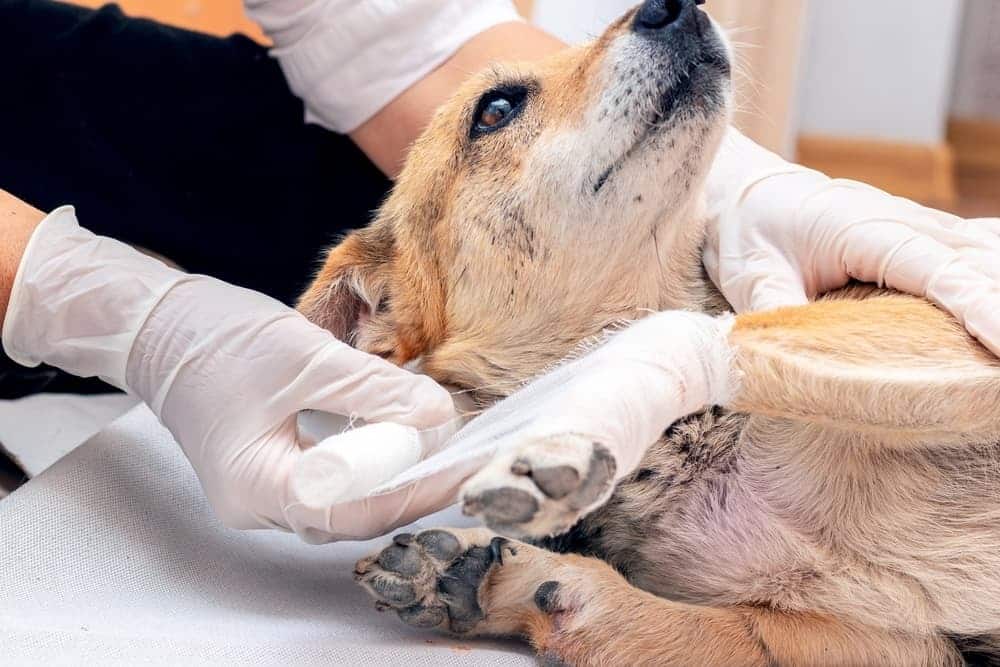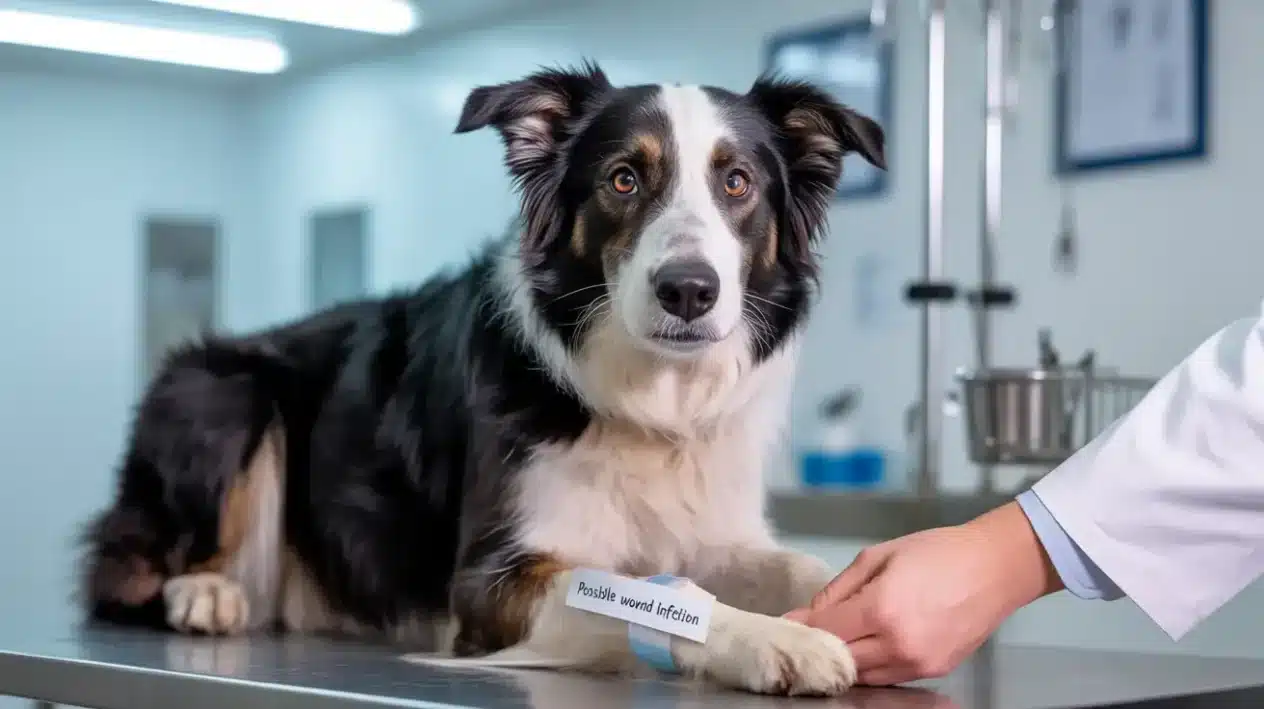Tetanus is a rare but extremely dangerous disease caused by the bacterium Clostridium tetani. Its spores live in soil, dust and even on the surfaces of objects. They enter the dog’s body through wounds such as bites, deep scratches, puncture wounds or any skin lesions that have been in contact with the ground. In an airless environment (a deep wound where there is little oxygen), the bacterium begins to actively release a toxin, tetanospasmin. It is this that affects the nervous system and leads to characteristic cramps and spasms.
Unlike many other infections, tetanus is dangerous not the bacterium itself, but the toxin, which quickly spreads through the body and acts on neurons. It blocks inhibitory signals in the nervous system, causing the muscles to contract continuously and very painfully.
Symptoms of toxin poisoning
Tetanus in dogs has an incubation period of 3-5 days to 3 weeks. Often owners do not associate a minor wound with the development of a severe condition, so they turn to the doctor already when obvious signs appear. Among them:
Stiffness of movement. The dog begins to walk “woodenly”, with outstretched legs.
Spasms of the jaw. It becomes difficult for the animal to open the mouth, because of which there are problems with the intake of food and water.
Strong convulsions. They appear after the slightest irritation – a loud sound, touch or even light.
Tense muzzle expression. Ears raised, eyes wide open, the corners of the lips as if “stretched” in an artificial smile.
Salivation and swallowing problems. Spasm of the throat may cause the dog to choke.
Respiratory disturbance. In severe cases, spasms of the diaphragm and chest muscles make breathing nearly impossible, which can lead to death.
Without treatment, tetanus in most cases ends tragically. Even with timely therapy, the prognosis remains serious.
Treatment and prevention of tetanus in dogs
Treatment of tetanus
Treatment of this disease is always complex and is only carried out in a veterinary clinic. Self-treatment at home is dangerous and gives virtually no chance of saving the dog. The basic steps of therapy include:
Administration of tetanus antitoxin. This is an antibody that neutralizes the toxin that has not yet had time to bind to nerve tissue. The earlier it is administered, the greater the chance of success.
Antibiotics. Most often metronidazole is used to kill the bacteria in the wound. In some cases, penicillins are used, but under the supervision of a doctor.
Surgical treatment of the wound. The affected areas are cleaned of contaminants and dead tissue to stop bacterial growth.
Sedatives and myorelaxants. These help relieve painful cramps and desensitize the nervous system.
Breathing support. In severe cases, artificial ventilation may be necessary, because spasms of the diaphragm block natural breathing.
Intensive care. Includes intravenous fluids, anesthetics, temperature control, special feeding.
Even with comprehensive treatment, the mortality rate from tetanus in dogs remains high. However, timely referral to a veterinarian significantly increases the chances of recovery.
Conclusion
Tetanus develops rapidly, and its symptoms should not be ignored. The best defense is proper wound care and careful attention to the pet’s condition. If tetanus is suspected, it is important to contact a veterinarian immediately, because your dog’s life depends on the speed of your actions.












